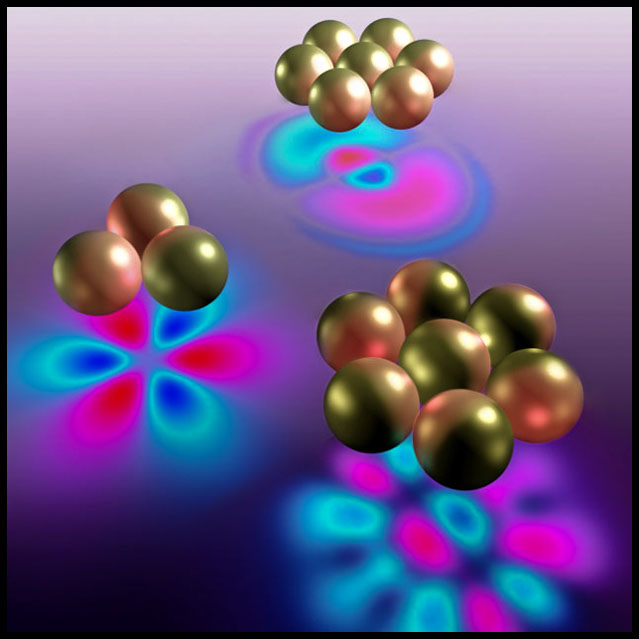Nano building blocks for a new class of optical circuits
June 2, 2010
By chemically building clusters of nanospheres from a liquid, a team of Harvard researchers, in collaboration with scientists at Rice University, the University of Texas at Austin, and the University of Houston, has developed novel devices with amazing and exotic optical properties not found in nature — by simply evaporating a droplet of particles on a surface.
The finding, published in the latest issue of Science, demonstrates simple scalable devices that exhibit customizable optical properties suitable for applications ranging from highly sensitive sensors and detectors to invisibility cloaks.

Schematics of two types of optical circuits: the three particle trimer functions as a nanoscale magnet, while the seven particle heptamer exhibits almost no scattering for a narrow range of wavelengths. (Capasso lab)
“With our bottom-up approach, we mimic the way nature creates innovative structures, which exhibit extremely useful properties,” explains Federico Capasso, Robert L. Wallace Professor of Applied Physics. “Our nanoclusters behave as tiny optical circuits and could be the basis of new technology such as detectors of single molecules, efficient and biologically compatible probes in cancer therapeutics, and optical tweezers to manipulate and sort out nano-sized particles. Moreover, the fabrication process is much simpler and cheaper to carry out.”
The researchers’ self-assembly method requires nothing more than a bit of mixing and drying. To form the clusters, the particles are first coated with a polymer, and a droplet of them is then evaporated on a water-repellent surface. In the process of evaporation, the particles pack together into small clusters. Using polymer spacers to separate the nanoparticles, the researchers were able to controllably achieve a two nanometer gap between the particles — far better resolution than traditional top-down methods allow.
More info: Harvard Science news